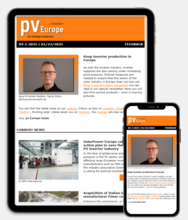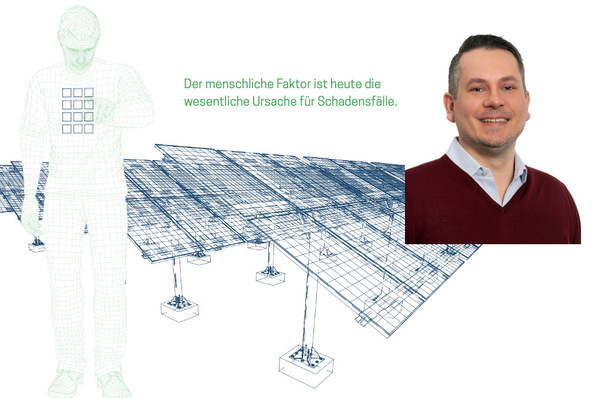Pigeons are not just an urban issue. “There are few unaffected locations in urban installations,” says Mattstedt. “For these large birds, photovoltaic systems must seem too good to be true. The protection they offer makes them ideal nesting sites.”
Find out more about the challenges of pigeons and other pests
Mattstedt recommends comprehensive preventive measures at every installation. But there's a caveat: “If we secure one roof, we simply shift the problem to the next. We’re making the animals homeless, but they’ll find somewhere else to breed.”
His suggestion: managed pigeon lofts with food, water, and expert oversight. This is all the more relevant given the risks of bird flu. In these safe spaces, the pigeons can breed without causing damage. Ultimately, pigeons are not truly wild animals but are considered feral domestic animals that seek out human environments.
Managing populations
Measures like these have already been tested in some areas, including replacing a large proportion of eggs with plastic fakes – an approach that helps keep populations at sustainable levels. The key is professional management, as demonstrated by the City of Augsburg. Across Germany, numerous similar projects are underway, mostly carried out by dedicated volunteers.
Self-sufficient surveillance of solar parks against theft and sabotage
Honeymoon period for breeding
If the birds have already started nesting, the critical window for action has passed. By law, broods are protected about seven days after eggs are laid. Until then, nests can be removed, but once chicks are present, German animal welfare law kicks in.
If breeding is already well underway and even two fluffy chicks are in the nest, a professional must be called. Adult birds rarely abandon fledglings that are close to flight. And after just four to six months, those young birds will be ready to start breeding themselves.
Different species, different requirements
With expert help, it’s possible to break the cycle. Once the fledglings are gone, pigeon protection systems should be installed immediately. This isn’t always as straightforward as it sounds.
New centre for solar module recycling in Münster, Germany
Aside from the obvious challenges of working at height, animal welfare is a key concern. Unfortunately, strategies effective against domestic pigeons don’t apply equally to other species, some of which are protected under different laws.
Special closed seasons may apply, or permissions may be needed from regional nature conservation authorities. “In severe cases, we always involve the district’s official veterinarians,” says Mattstedt. “We document every step. If a concerned neighbour calls the police, they’re referred to the vet.”
Warranty issues
Not every protection system is compatible with every module type, and not all fastening methods are approved by manufacturers. In some cases, gluing components can void the warranty; in others, screwing or clipping to the frame may do the same. One German manufacturer has stated that using clips on the outer frame technically violates their installation guidelines.
Protecting solar plants in extreme weather
Once the appropriate system and fastening type have been selected, the height of the installation above the tiles must be carefully determined. If the spacing is off, it can create tension across the protection system, sometimes causing it to fail within months.
In other cases, electric deterrents don’t carry enough voltage, or the gaps are too wide, and the pigeons simply return. “In our training courses, we recommend that installers offer a product line that includes pigeon protection,” says Mattstedt. This allows system protection to be aligned with manufacturer warranties.
Ecological Solar Cleaning
Pigeon protection in Germany, Austria, and Switzerland
The company is both a craft business and training provider, specialising in pigeon protection for PV systems, from prevention during construction to retrofitting in long-term, severe infestations.
New ideas and products for roofers to install PV systems
They also advise companies, municipalities, and institutions on animal welfare–compliant construction. The goal: to reduce and ultimately eliminate animal suffering in building projects, often caused more by ignorance than malice.
A key aim is to anchor animal protection earlier in the process, ideally in the tender phase, giving greater weight to compliance with and documentation of animal welfare laws. (HS/TF)
Read more: Software suite for maximising solar project efficiency








